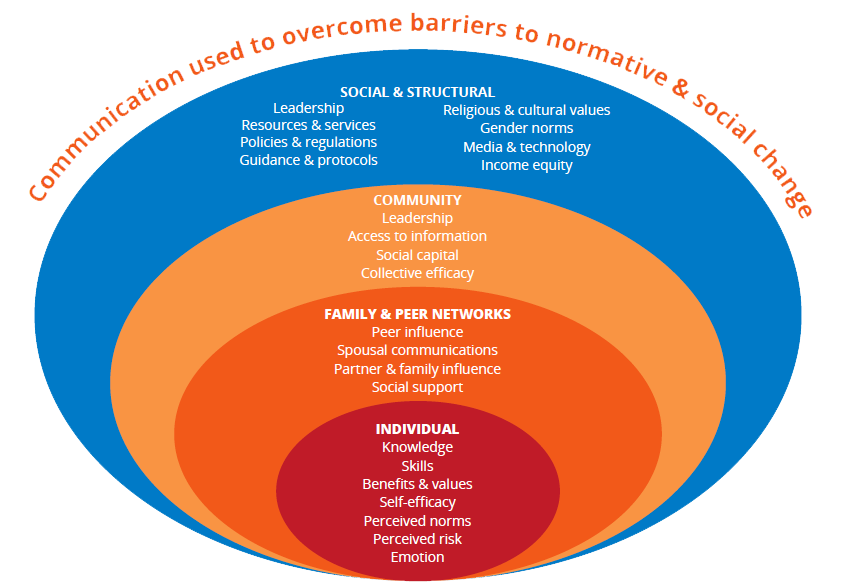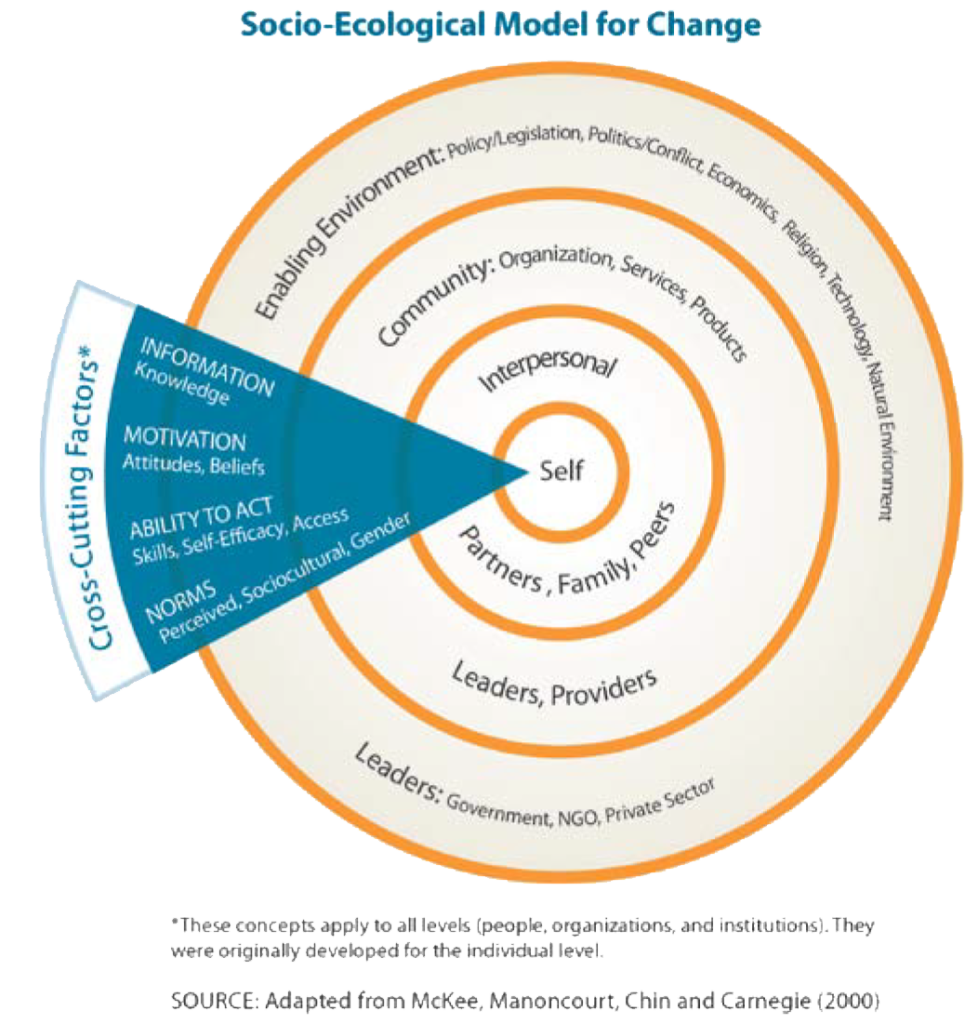What Is Social and Behavior Change Communication?
Previously known as behavior change communication (BCC), SBCC is the strategic use of communication approaches to promote changes in knowledge, attitudes, norms, beliefs and behaviors. The terms BCC and SBCC are interchangeable, and they both refer to the coordination of messages and activities across a variety of channels to reach multiple levels of society, including the individual, the community, services and policy.
SBCC is grounded in theory and is evidence-based. Programs are designed on the basis of existing data and they follow a systematic process, analyzing the problem in order to define barriers and motivators to change, and design a comprehensive set of tailored interventions that promote the desired behaviors. An SBCC strategy is the document that guides the design of interventions, establishing intended audiences, setting behavioral communication objectives and determining consistent messages, materials and activities across channels.
Influences on Behavior
Behavior is a complex phenomenon, influenced by factors within the individual and beyond. The Social Ecological Model (below), informed by Bronfenbrenner’s 1979 seminal work, recognizes four levels of influence that interact to affect behavior: individual, family and peer networks, community and social/structural (Glanz & Rimer, 2005; Glanz & Bishop, 2010; HC3, 2014).
Individual: At this level behavior is affected by factors within the individual. Examples include knowledge, attitudes, skills, emotions and beliefs.
Family and peer networks: At this level, individual behavior is affected by a person’s close social and family circle. This includes influence from peers, spouse, partner, family and social support.
Community: This refers to influences from the situational context in which the individual lives and in which social relationships are nested. The characteristics of the context are associated with risk and protective factors and include leadership, access to information, service provision, social capital and collective efficacy.
Social/Structural: This refers to the larger, macro-level environment which can either promote or deter behaviors. Examples include leadership, health systems, resources and services, policies, guidance and protocols, religious and cultural values, media and technology, gender norms and income equity.
As the field of BCC evolved, it placed greater emphasis on the socio-ecological context that grounds individual behaviors, and thus the preference for using SBCC as opposed to BCC.

 At each of these four levels of influence there are factors that affect behavior in positive ways (facilitators) and factors that affect behavior in negative ways (barriers). Effective SBCC interventions should aim to develop messages and activities that influence all four levels of the Social-Ecological Model, maximizing the facilitators and limiting the barriers.
At each of these four levels of influence there are factors that affect behavior in positive ways (facilitators) and factors that affect behavior in negative ways (barriers). Effective SBCC interventions should aim to develop messages and activities that influence all four levels of the Social-Ecological Model, maximizing the facilitators and limiting the barriers.
It is important to recognize, however, that it is unlikely for one single organization to be able to operate at all four levels, as these often require different skills, strategies and approaches. Coordination and partnerships with institutions and organization that operate at different levels are therefore necessary for a comprehensive SBCC approach.
The social ecological model has been incorporated into the “Model for Change” developed by C-Change, which outlines the levels at which SBCC programs can be developed. This model (right) – originally adapted from McKee, Manoncourt, Chin and Carnegie – can be used in analysis, planning and implementation (C-Change, 2012).
Why Is SBCC Important in Emergencies
During disease outbreaks and emergencies, specific actions are required of affected communities for prevention, containment and control. Communities need to be informed, motivated and equipped to practice the necessary protective behaviors, and this can be achieved through effective SBCC programming.
Social and behavior change communication plays a critical role in addressing all the behavioral and social aspects of disease prevention and control. In particular, SBCC can:
- Provide accurate, clear, relevant and timely information to the public on how to contain the emergency and protect themselves
- Identify and address myths and misconceptions that may lead to detrimental practices
- Maintain public trust
- Prepare communities for emergency response actions
- Reassure the public
- Support communities and countries to recover and rebuild themselves after an emergency
If an emergency response does not include strategically applied communication activities, it is unlikely to succeed as desired. This is demonstrated by the tragic Ebola virus outbreak in West Africa in 2014, when lack of adequate and appropriate communication early on in the response fueled fear, panic and denial; spread misconceptions and rumors; and contributed to the further spread of the disease.
SBCC has therefore been acknowledged as a key element of any crisis or emergency preparedness plan, and should be integrated in all stages of an emergency response – from prevention and preparedness through to crisis response and recovery.
At the beginning of an emergency, the role of SBCC is to engage the public, support them in making informed decisions about their risks and encourage them to respond effectively to those risks. The communication and related pillars will ensure that response activities are accompanied by appropriate communication interventions. Key areas in which the emergency communication pillar may intervene include:
- Coordination
- Community mobilization and action
- Message development and dissemination
- Capacity development
- Monitoring and evaluation (M&E)

